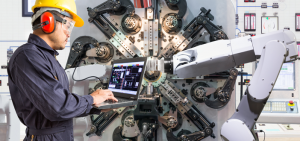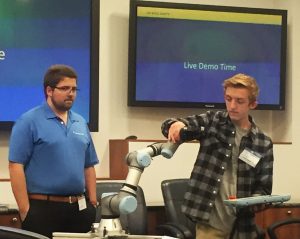
By Nigel Moore, President & CEO, Total Wellness Strategies, LLC
So much chatter online, differences of opinions, BREXIT votes and TPP posturing, no wonder companies are confused today as to why they should even think about exporting.
For average companies today, in particular a manufacturing company to stay in the game and remain a true world resource, they need to continue to innovate, developing new products and services for a captive expanded global marketplace. We say 95% of the world’s population lives outside the U.S., in fact statistics show with global population growth, it’s now more like 96%. So why market to only 4-5% of the worlds population in the U.S. when the commercial size of the world has doubled in just 30 years, with the cost of doing business overseas dropping dramatically. Yes the dollar is high right now against most European currencies, but it will not be high forever, now is the time to lay the groundwork and foundation for exporting and becoming a global company.
Typically more than 60% of manufacturers are reactive instead of proactive, they face the problem of commoditized products, lack of new product ideas and or a solid marketing strategy. Exporting opportunities could help companies develop an innovation pipeline of new products, a home for outdated or commoditized products and diversification of supply chain with global expansion. We should also not lose sight of the fact 70% of the manufacturers nationally have 10 or fewer employees. There is a big opportunity to expand market penetration and develop a new customer base for these smaller companies and turn them into bigger thriving successful enterprises.
“The World Is Flat” the title of the famous book from 2005 clearly states no longer are U.S. manufacturers competing with competitors in the same or next town, but now compete across the globe in places like China, India and Europe, and in particular Germany. Events like the attacks of 9/11, the Iraq war and the convergence of technology and events that allowed India, China and so many other countries to become part of the global supply chain for services and manufacturing has created an explosion of wealth in the middle classes of the world’s nations giving them a new stake in the success of globalization.
I’ve spent several years visiting more than 250 manufacturing companies across 20+ states coaching them on the merits of moving their business to the next level via exporting. Now I’m not talking about twisting arms and convincing them they should drop their domestic business and replace it with exporting, but about being proactive instead of reactive in expanding outside the four walls of the U.S. Many companies I meet are reactive or what I like to call “accidental” exporters, they don’t know what they don’t know. They are reactive to inquiries from overseas buyers, complete one or two transactions and don’t know how to capitalize on this newfound opportunity or make costly mistakes and drop the opportunity.
I’ve been very fortunate having spent the last 5 years working with a program called ExporTech (a joint venture of NIST MEP & the U.S. Commercial Service). ExporTech is not a training program, but an intensive structured execution program that develops a strategic growth export plan for a company. Almost 900 companies have participated in the program from its inception with the average increase in sales per graduating company of $500,000 to $700,000.
There are a lot of naysayers out there that say exporting is only for big companies, I’ve worked with 2 person companies that were amazed as to how much help there is available to support U.S. companies who want to become proactive in their global business and how it has increased their business in some cases 10 fold.
If you’re interested in more information, call the MEP Center at 801.587.0713 or contact them here.
Resources:
www.export.gov
www.trade.gov
www.exim.gov
State Trade and Export Promotion (STEP)
Nigel is a seasoned executive with a 30+year portfolio of success, proactively driving change in the manufacturing and service sectors designed to systematically create or expand a company’s domestic and international business. Nigel has over 25 years of management consulting experience in new business development and International sales, operations,  and general management. Nigel currently works with the National Institute of Standards and Technology-Manufacturing Extension Partnership program (NIST MEP) working to improve sales performance and operations within its 60 centers nationally and specifically is part of the National ExporTechTM Team as an Export Consultant expanding the ExporTechTM brand, working with 20+ states and more than 250 manufacturers nationwide in their quest to expand global business.
and general management. Nigel currently works with the National Institute of Standards and Technology-Manufacturing Extension Partnership program (NIST MEP) working to improve sales performance and operations within its 60 centers nationally and specifically is part of the National ExporTechTM Team as an Export Consultant expanding the ExporTechTM brand, working with 20+ states and more than 250 manufacturers nationwide in their quest to expand global business.


 helped establish and run two MEP centers and has a varied background in non-profit management, leadership development and technology-based Economic Development.
helped establish and run two MEP centers and has a varied background in non-profit management, leadership development and technology-based Economic Development.
 and general management. Nigel currently works with the National Institute of Standards and Technology-Manufacturing Extension Partnership program (NIST MEP) working to improve sales performance and operations within its 60 centers nationally and specifically is part of the National ExporTechTM Team as an Export Consultant expanding the ExporTechTM brand, working with 20+ states and more than 250 manufacturers nationwide in their quest to expand global business.
and general management. Nigel currently works with the National Institute of Standards and Technology-Manufacturing Extension Partnership program (NIST MEP) working to improve sales performance and operations within its 60 centers nationally and specifically is part of the National ExporTechTM Team as an Export Consultant expanding the ExporTechTM brand, working with 20+ states and more than 250 manufacturers nationwide in their quest to expand global business.



